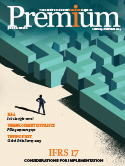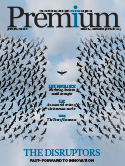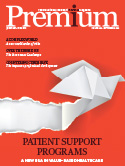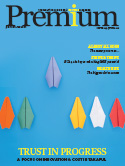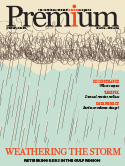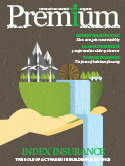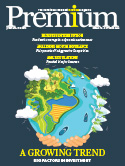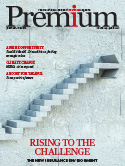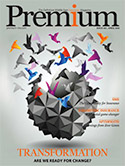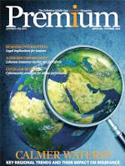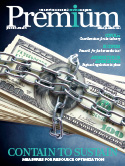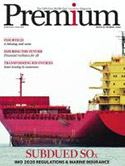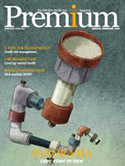GCC insurance: Profits to remain in 2021
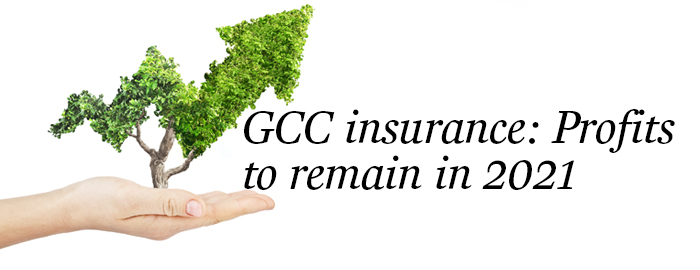
Premium growth and earnings of insurers will be under more pressure in 2021 than in 2020, due to high competition and ongoing stress albeit being stable, observes Emir Mujkic.
The COVID-19 pandemic dominated the headlines in 2020 and will continue to do so during most of 2021 but the rollout of vaccines has brought hope that an end is in sight. Although we expect an economic recovery in the Gulf Corporation Council (GCC) in 2021, due to higher oil prices and the rollout of the COVID-19 vaccine, some sectors will likely continue to struggle amid an uneven economic recovery. In addition to economic pressure, the shift to greater home working has further increased the pressure in key sectors such as real estate, retail, transportation, and hospitality. In our view, this will weigh on gross written premium (GWP) growth prospects of insurers in the region this year.
Unlike in the corporate sector where the pandemic led to widespread rating downgrades in 2020, our ratings on insurers in the GCC have remained broadly stable. In fact, we have seen several positive ratings actions especially on UAE and Saudi Arabia-based insurers since the beginning of 2021, thanks to relatively strong earnings and a build-up in capital adequacy in recent years. Insurers in the region have benefitted from either zero or only modest exposure to COVID-19-related claims, as most local governments cover medical claims related to the pandemic. Although we continue to expect our ratings on insurers to remain broadly stable during the remaining part of the year, there is still a possibility of negative ratings actions: a sharp decline in asset prices, unexpected severe technical losses, company-specific governance, or internal control failures.
Potential asset volatility remains a key risk in 2021
A decline in returns on fixed deposits to one to two percent from more than two percent pre-pandemic has prompted some insurers to increase their exposure to equities or other high-risk assets in a search for higher yields. Financial markets recovered in the second half of 2020 after a sharp drop following the outbreak of COVID-19, meaning that most insurers could largely reverse some of the unrealised investment losses that they accumulated earlier in the year. Although equity markets had also a strong start in most GCC countries in the first part of 2021, a potential return of volatility in capital markets could negatively affect earnings and capital of insurers with significant exposure to market risk once the pandemic is largely contained and the focus turns to the gradual phasing out of extraordinary stimulus measures. With real estate prices remaining under pressure, insurers with exposure to property investments will likely need to make further write offs and live with lower rental yields, impacting their earnings.
The collection of receivables will also be an issue for some insurers, depending on their portfolio and client mix given the ongoing pressure in certain sectors. We anticipate that premium collections will remain slow for some insurers as businesses and governments delay their payments in an attempt manage their cash flows. Thereby, leading to an increase in receivables and potential write-offs, putting further stress on liquidity, earnings, and capital and consequently credit conditions for some insurers.
Pressure on pricing will persist
Amid weaker economic conditions, GWP growth has been relatively modest in most GCC markets, partly driven by less business activity and/or an increase in the competition between insurers in recent years. This has particularly been the case in motor and medical lines, which together make up more than 60 percent of total non-life GWP in most markets in the region. Although we expect a moderate economic recovery in the GCC in 2021 due to higher oil prices and the COVID-19 vaccine drive; a slowdown in population growth across the GCC and ongoing pressure in key sectors will likely weigh on growth prospects. Lower consumer spending could also have short-term implications on demand for non-mandatory products, such as certain life insurance policies.
As in previous years, new mandatory covers together will with ongoing government-sponsored infrastructure projects and higher reinsurance rates will be the key drivers for GWP growth in most countries in the region. However, we expect that premium growth will not be evenly distributed, since the trend in recent years suggests that the large insurers are getting larger in terms of premiums, market share as well as profit. So, whilst the pie is growing in some cases, it is not evenly distributed. Smaller insurers have often been pushed to compete on price which has hampered their profitability to a certain extent.
While the UAE in particular is currently experiencing an increase in consumer confidence due to the successful rollout of vaccines, as well as higher oil prices and other measures such as changes in visa requirements, GWP growth in 2021 will likely be offset by ongoing pressure on motor rates. That said, it is possible that some of this pressure could be alleviated in the last quarter, due to the continued success of vaccination rollouts across the GCC countries and the start of Expo 2020. Though it is unlikely these factors will substantially affect the year.
On the bright side, the pandemic has accelerated the development of digitalisation of sales and claims processing in the GCC. More automation and focus on digital sales platforms to offset social-distancing measures could ease policyholder access in the future. Higher awareness of insurance products and need for protection among the population could increase the demand for medical and critical illness policies covering COVID-19 and other pandemic risks. Meaning business owners could try to obtain policies that also cover against pandemic-related risks, which was earlier considered optional.
Moreover, despite fewer claims in 2020, due to movement restrictions and pandemic-related claims not being covered under most policies, resumption of nonessential medical treatment has caused claims to rise to more normal levels. Consequently, leading to thinner margins and weaker underwriting results in 2021 when compared with 2020.
Low reinsurance capacity in the region has also led to strong rate increases and we expect this will continue for the rest of the year. Although this will benefit reinsurers’ top line and earnings, it could squeeze primary insurers’ underwriting margins further. A potential shift to lower-rated or unrated reinsurers in search of lower rates could also increase credit risk.
Consolidation to further accelerate
We believe that regulators in the region have enhanced their data collection and regulatory oversight following the outbreak of COVID-19. The development of new and stricter regulations

Emir Mujkic, director and lead analyst, Insurance Ratings, S&P Global Ratings
combined with more effective regulatory oversight could further improve discipline and transparency in the sector. As a result of this and ongoing economic pressure, we expect to see further consolidation in the sector in 2021. This will particularly be the case in Saudi Arabia and Kuwait.
Following recent merger announcements in Saudi Arabia, consolidation will likely continue this year, given that roughly one-third of the 30 active primary insurers are still making losses. Although companies in Kuwait will have at least 12 months to fully implement all aspects of the new insurance law that were published earlier this year in March, it is likely that the reserving requirements will increase. As a result, we expect that some insurers with weaker capital buffers will need to either raise additional capital or consolidate.
In summary, while we expect to see an improvement in economic conditions and consumer confidence, but asset-related risks will persist due to an uneven recovery. At the same time, premium growth and earnings of insurers will be under more pressure in 2021 than in 2020, due to high competition and ongoing stress in some key sectors of the economy. That said, credit conditions are expected to remain broadly stable during the second part of the year, supported by the capital strength of many insurers in the sector and improving discipline thanks to stricter regulations.
Read More:








